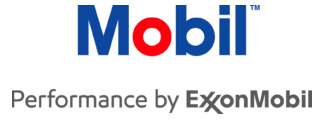By Rick Carter, Executive Editor
Except for one thing, William Marsh’s story is not so unusual. The owner of American Bar Products, a Pennsylvania-based maker of cold-finished steel bars, Marsh was fined $8000 by OSHA in 2011 for lockout/tagout deficiencies. Though reduced from $20,000, the fine was tough on his small company and a blow to Marsh’s pride. The fact that the investigation was triggered by a disgruntled employee’s false claims about company safety was also disturbing, and a foreshadowing of things to come.
When the same employee was fired in 2012 for cheating on his time card, Marsh warned his team to expect another visit from OSHA. “I thought it would take two weeks,” he said. “It took two days.” And here’s the twist: “This time I didn’t let them in. I said they needed a warrant, and that when they returned, to bring the area supervisor, and that my congressman and an agent of the press would be here.”
After that, nothing—until late last year when OSHA returned, unannounced, to check plant noise levels. “They were just in the neighborhood,” said Marsh, “but they had no formal complaint, so I denied their entry again. And they got a warrant, which listed ‘probable cause’ as their reason for entry.” When OSHA declined to explain the cause, Marsh decided to take his case to the world.
“I invited members of the local news media to tour our facility,” he said, “and they ran stories about what was going on.” He also invited two state senators, one of whom was quoted saying OSHA’s actions sounded like “an agency gone rogue.” But the officials could do nothing for Marsh, nor could the local-business owners who called and emailed their support after the articles appeared. When Marsh asked them to join him at a press conference he was planning, all politely declined.
Marsh held the conference anyway, in early December, the day before the warrant-authorized inspection was scheduled. Posted on YouTube (search “William Marsh standing up to OSHA”), the event shows a passionate company owner who believes in his ability to run his business properly and safely, with his experienced staff, without government intervention. When I spoke with Marsh on the day of the inspection, the agent had already found several instances of missing paperwork. Marsh was not encouraged. “I expect to be fined heavily,” he said, “probably $10,000 to $20,000 from OSHA, in addition to my legal fees. And my plant will be no safer for it.”
At press time, Marsh didn’t know the official outcome of the inspection. In our conversation, he stressed that while his shop’s heavy-industry environment is not pristine, “it is not unsafe. For what we do,” he said, “it is an exemplary manufacturing facility.” And I don’t doubt it. The unfortunate lesson here, however, is that government regulations have evolved to where they are because not every business owner is as capable or trustworthy as William Marsh may be.
With his David/Goliath approach and belief that his property was searched unreasonably, it’s hard to be totally critical of Marsh. Yet it’s harder still to watch him take another hit for something he could easily correct. His small operation may lack “the ability to finance a paperwork engine,” as he claimed, but if he wants to stay in business he will probably have to get that engine going. Better to bring on part-time office help than hand over big money in federal fines. As everyone else Marsh looked to for help seemed to already know, that’s a sure way to bring his story to a quick end. MT&AP
rcarter@atpnetwork.com


 We are all familiar with potential hazards relating to arc flash and other electrical incidents. But what about other safety issues that plants and facilities face? Some common, yet often overlooked, safety issues include those relating to pressure and pressurized systems. These include boilers and their associated distribution systems and high-pressure refrigerants. While this is not a complete list, it’s worth noting that incidents involving these types of systems and products are just as important and potentially hazardous as any arc flash incident.
We are all familiar with potential hazards relating to arc flash and other electrical incidents. But what about other safety issues that plants and facilities face? Some common, yet often overlooked, safety issues include those relating to pressure and pressurized systems. These include boilers and their associated distribution systems and high-pressure refrigerants. While this is not a complete list, it’s worth noting that incidents involving these types of systems and products are just as important and potentially hazardous as any arc flash incident.
